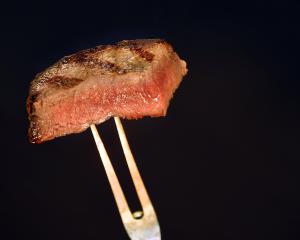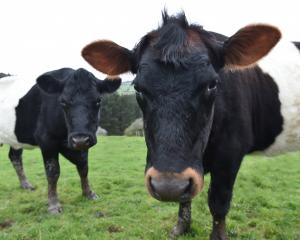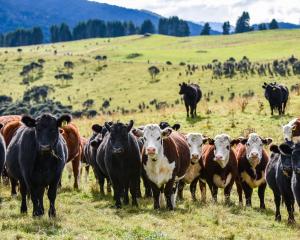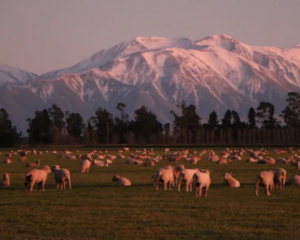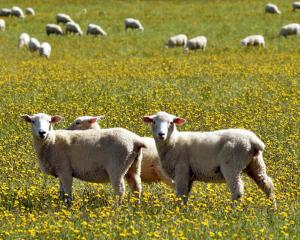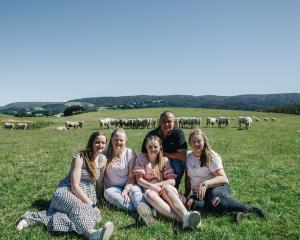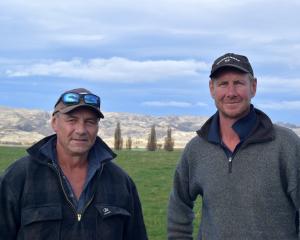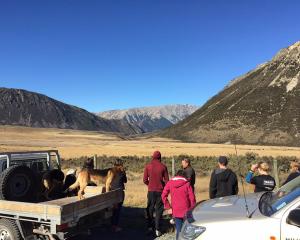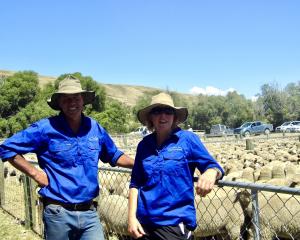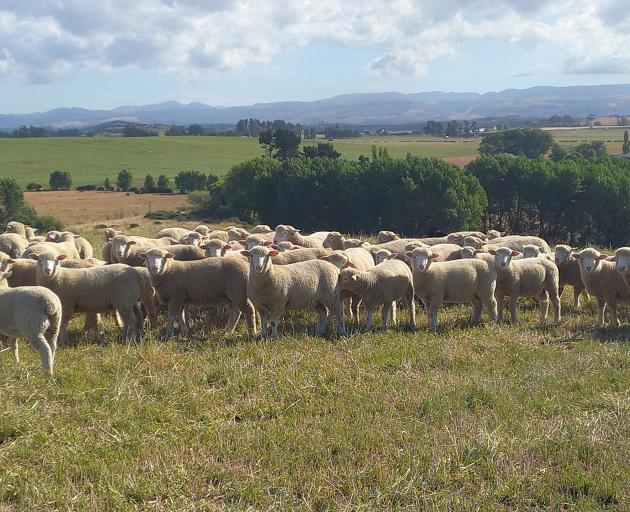
A better-than-average growing season on the foothills and a flat market since Christmas during the traditional bottleneck has helped, but does not disguise a lamb schedule back on the previous two seasons.
Lamb prices were sitting at about the early to mid $5 per kilogram at the start of the month — down on last season’s $7/kg to mid-$7/kg range.
Good store lambs selling in the mid-$70 range were fetching in the mid-$80 range previously.
Farmers say the lower lamb prices and a sinking cull ewe market have been tough to take.
Federated Farmers Mid Canterbury chairman David Acland said farmers would be riding out the price drop for lamb and cull ewes.
The impact of this on farms would vary as every farmer had different challenges and pressure points.
This season was pretty much done and they would be working towards keeping ewe flocks in good nick for next season, he said.
"It’s a tough gig at the moment lamb-price wise.
"The only confidence I take at the moment is it has been very flat since before Christmas.
"We haven’t seen any downward trends schedule-wise so hopefully it’s hit the bottom and stayed there."
Good-sized lambs without tail-enders selling for nearly $90 at Mt Somers Station’s on-farm sale before Christmas were back about $10 a head.
The year before bidding was above $100.
Prices are understood to have ranged from $60 to $140 for top pens at the Ashburton Gorge sale at a stage when processing works were closing off their kill date for export shipments over Easter.
Farmers with good feed might be holding some lambs, but this option might be removed if more dry weather kicks in.
Mr Acland said he and wife Kate had tried to keep their routine at the station.
"Kate and I were having a discussion with the livestock manager in regards to trigger points and making sure we had lambs lined up, to make decisions over the next two to three weeks.
"You always need to be prepared and have a thought process going, especially with North Canterbury just having a prohibitive fire season in place.

Arable farmers making the most of dry weather during a good grass-seed harvest might also pick up store lambs.
The cull ewe situation was ugly and had created a hole in sheep and beef revenues, he said.
"You are looking at $50 to $60 for a cull ewe and last year it was closer to $100 and the year before it was sort of $140.
"For us that is a real kicker and a big whack of money that’s disappeared over the last three years."
Demand drying up in China — where mutton goes into hot pot and traditional barbecue dishes — and an increased kill in Australia only just slowing down contributed to put a dent in prices.
Farmers carrying a few more ewes with good mouths and udders would not want to be overstocked with the dry setting in.
"I know a few people shifted ewes with lambs at foot early on.
"We don’t usually, but that was probably a wise call back then for those that could do it.
"I think the mutton kill is on par and people are saying we’ve just got to get them out so they don’t bugger up the system too much.
"If you take more mouths through then you’re possibly not feeding something else to its potential when it starts to get dry."
Farmers would be mapping out various scenarios, sticking to the basics, stopping unnecessary spending, paying interest only on loans and making sure bankers and other professionals were kept informed.
"Hopefully this is just a blip this year and we can pass through it and get back into it next season.
"But you have to have stock in good nick for the new season so you can concentrate on that bit.
"Once you get the lambs off ewes at weaning it’s those ewes driving next year’s production so you have to concentrate on getting them in good nick at tupping and wintering and back into the cycle.
"They are the engine-house of a sheep and beef farm."
Mid Canterbury ewes and hoggets coming off weaning were in better condition than last year after the easiest spring experienced in the past four years, he said.
Mt Somers Station weans lambs quite young before Christmas.
Average lamb weights for terminals were at about 31kg to 32kg and crossbreds before Christmas were at 28kg to 29kg.
"They were all up 1kg on the year before.
"So lamb weights were all up a bit, and were in much better nick and we were happy where we were at.
"And that’s great as animals do quite well in hot, dry weather as long as you have a bit of tucker."
This would only help a bit to offset lower prices.


